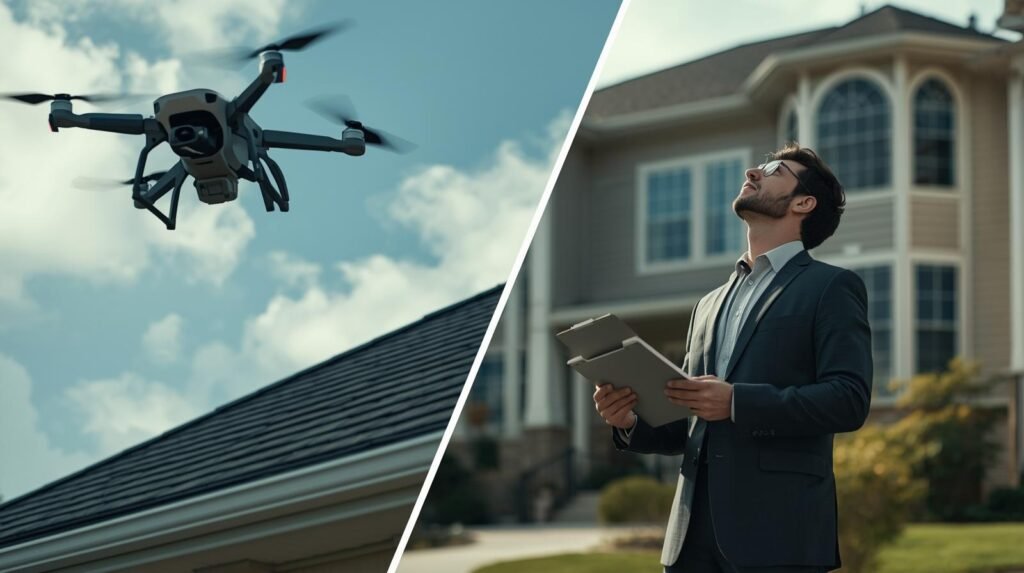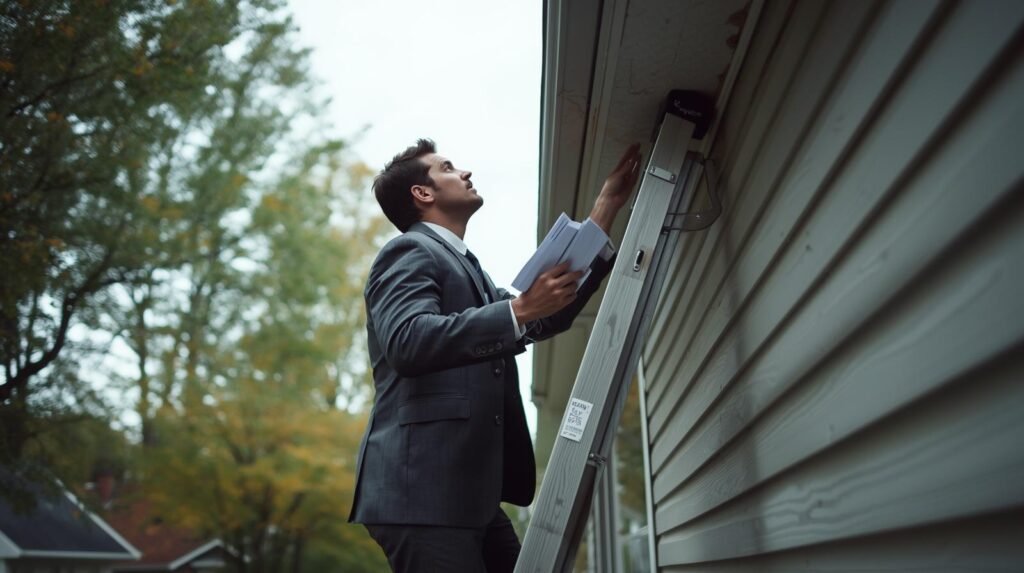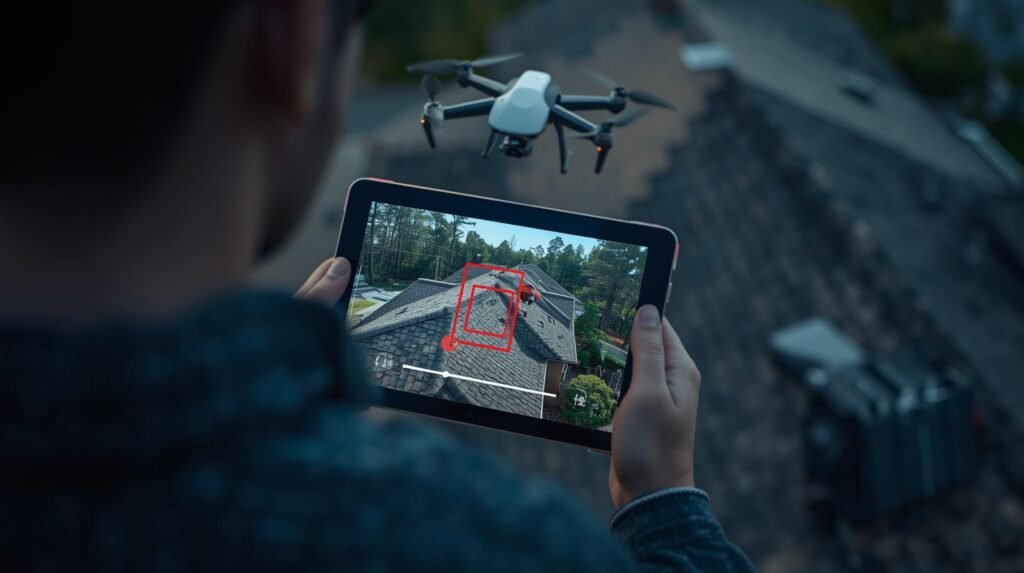Hey everyone! I’m Adnan from The Insurtech Guide. After a major hailstorm last year, I saw something I’d never seen before: a neighbor’s insurance company used a drone to inspect their roof damage. While my own adjuster was carefully climbing a ladder, their drone was up, done, and gone in under 30 minutes.
This got me thinking. We’re in the middle of a huge shift in how insurance claims are handled. The classic image of a friendly but slow-moving human adjuster is being challenged by the speed and precision of technology.
This isn’t just about cool gadgets; it’s about a real-world difference in time and money. So, in the battle of drone inspection vs human adjuster, which process is actually faster and more efficient? I did a deep dive into this new technology to compare the old way with the new.

Table of Contents
The “Old Way”: The Human Adjuster Process
Let’s start with what we all know. The traditional claims process for roof damage is a very manual, human-driven endeavor.
My Past Experience: A few years ago, I had to file a claim for wind damage. The process went like this:
- I filed the claim and waited for an adjuster to be assigned.
- We scheduled an appointment, which took over a week due to their busy schedule.
- The adjuster arrived, spent about an hour on my roof, taking photos and making notes on a clipboard.
- I waited again for him to file his report.
- Finally, I received the settlement offer.
The entire process, from the initial call to the final offer, took nearly three weeks. The adjuster was professional and thorough, but the process was undeniably slow, relying on human availability and manual data entry.

The “New Way”: The Drone Inspection Process
Now, let’s look at the InsurTech approach I witnessed. A drone for roof inspection insurance claims changes the entire workflow.
- How it works: After you file a claim, the insurer can dispatch a licensed drone pilot (or even the adjuster themself) to your home, often within 24-48 hours. The drone flies a pre-programmed path over your roof, capturing hundreds of high-resolution images and videos in about 20-30 minutes.
- The AI Magic: This is the key. The images are then uploaded to an AI platform that uses computer vision to analyze the damage. The AI can instantly identify every single damaged shingle, measure the exact area of the damage, and generate a detailed, accurate repair estimate, often in a matter of hours.
The Head-to-Head Comparison: Drone inspection vs Human adjuster
Let’s break down the real differences in this drone inspection vs human adjuster showdown.
| Feature | Drone Inspection (with AI) | Human Adjuster (Traditional) |
| Inspection Speed | Extremely Fast. 20-30 minutes on-site. | Slow. 1-2 hours on-site, plus travel time. |
| Scheduling Wait Time | Very Short. Often within 24-48 hours. | Long. Can be a week or more, especially after a storm. |
| Data Accuracy | Highly Accurate & Objective. Captures hundreds of high-res images; AI analysis is data-driven. | Good, but can be Subjective. Relies on the individual adjuster’s assessment and note-taking. |
| Safety | Completely Safe. No one needs to climb a ladder or walk on a steep, damaged roof. | Risky. Involves the physical risk of climbing ladders and falling. |
| Total Claim Time | Days. The entire process can be completed in as little as 2-3 days. | Weeks. The process often takes 2-3 weeks or more. |

Final Verdict: Drones Are Unquestionably Faster
After researching and witnessing the process, the conclusion is clear: for a standard roof damage claim, a drone inspection is significantly faster, safer, and often more accurate than a human-adjuster-only process.
The ability to schedule an inspection quickly, capture comprehensive data in minutes, and use AI for instant analysis dramatically reduces the claim cycle time. It turns a weeks-long waiting game into a matter of days.
While a human adjuster will always be essential for complex cases and for providing the final approval, the drone has become their most powerful tool. It’s a perfect example of how technology isn’t replacing humans but is instead giving them the superpowers to do their job faster and better than ever before.





Leave a Reply